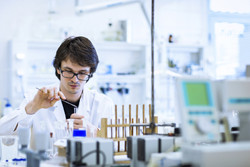Mapping carbohydrate-protein interactions
Unlike proteins, carbohydrate structure is not encoded by the genome and genetic studies can only provide limited information. Also, proteomics cannot address the post-translational modifications of proteins during glycosylation — often the driving force of protein function. To investigate the role of carbohydrate-protein interactions in health and disease one would need to look into the biochemical nature of this association. In this context, the EU-funded EUROGLYCOARRAYS project brought in European experts to develop and apply carbohydrate arrays, also called glycoarrays. These glycoarrays would contain carbohydrate structures, such as those found on cell surfaces attached to proteins and lipids. Such arrays will prove useful when investigating carbohydrate-binding proteins, offering invaluable information on carbohydrate-protein interactions. To generate probes for the glycoarrays, partners used both natural and synthetic carbohydrates. Synthetic probes were quite versatile and provided pure material for attachment on the array platforms. In addition to standard glass slides and analysis by fluorescent spectroscopy, an additional glycoarray platform format was developed for studying glycoenzyme reactions. Bioinformatics tools were also developed for configuring the three dimensional structure of carbohydrates. Along with the glycoarrays they were used in virology applications, identification of carbohydrate-based cancer biomarkers and investigation of proteins' glycosylation pattern in muscular dystrophies. Overall, the developed glycoarray technology could form the basis for carbohydrate-based diagnostics that can also be used for monitoring the treatment outcome in many diseases. Importantly, the EUROGLYCOARRAYS project hopes to transform glycomics into an integral aspect of omics technologies.







